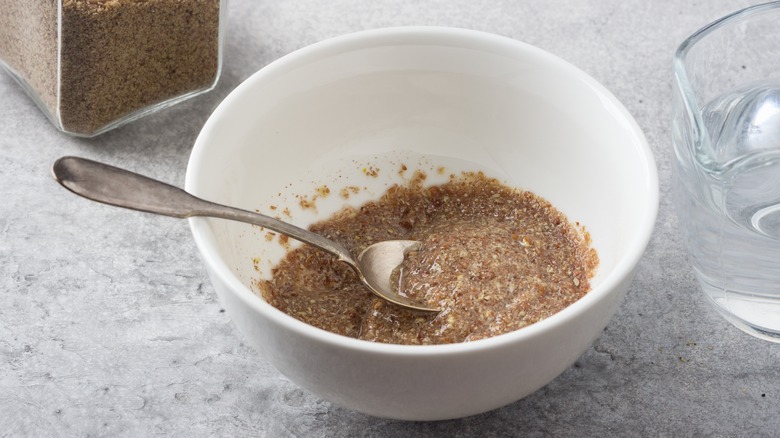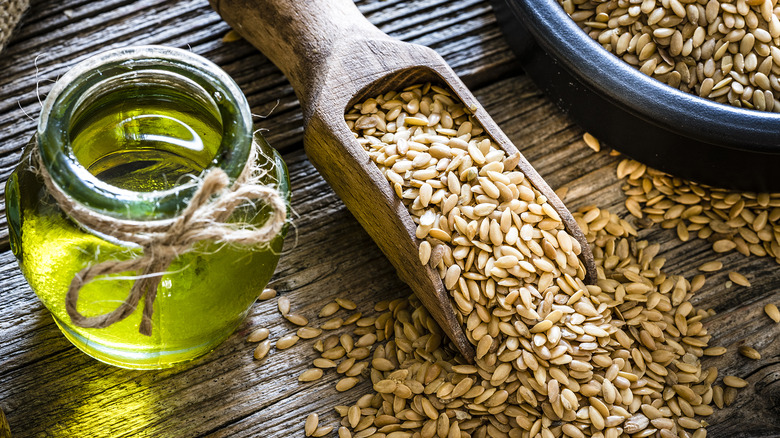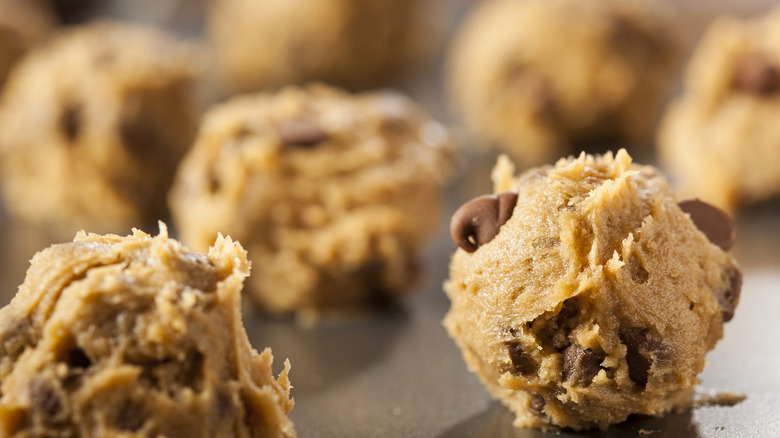How To Make A Flax Egg Substitute In 5 Minutes Flat
When preparing to make a recipe from scratch, the last thing you want to do is add on time crafting up specialty ingredients. Luckily, when it comes to making a flax egg — a common egg substitute in vegan and plant-based baking recipes — there's a simple way to throw one together in minutes. Five minutes flat, to be precise.
Though it can seem intimidating at first glance to make your own egg substitution, all you need to make a flax egg is 1 tablespoon of flaxseed meal, 3 tablespoons of water, and a small bowl to incorporate the two ingredients. Mix together your flaxseed meal and water with a spoon, then leave the seeds to soak up the water. For efficiency, it's best to time this five minutes before you plan to incorporate the flax egg into your cake batter or cookie dough recipe. After the five-minute mark has passed, you'll notice that the ground seed meal has become nice and hydrated with the water, forming a sticky, gloopy paste — similar to the consistency of an egg white.
What makes flaxseed egg-y?
Once you've hydrated your flaxseed meal with water, you'll be ready to incorporate it into a variety of recipes that traditionally call for an egg as the binder, such as cookie dough, muffins, and cakes. You can also use a flax egg in savory recipes like meatballs to hold ingredients together, in place of an egg. Eggs are an important ingredient in baked foods for many reasons, but mostly due to their structural, binding, and hydration capacities. Flax eggs work remarkably well as a swap for eggs in recipes where the eggs are meant to combine and emulsify ingredients, as well as provide moisture.
Ground flax meal exhibits excellent water-binding properties, which in large part come from the dietary fiber and carbohydrates found in the coating of each individual seed. When flaxseed meal is combined in room temperature water, what results is a gelatinous paste that works to bind ingredients in eggless recipes. Flaxseeds are also known for their healthy quantities of omega-3 fatty acids, which make them nutritious and also serve to add some fat to the recipe, just like an egg yolk.
How to swap in a flax egg
Though the fats in flaxseeds make them particularly susceptible to rancidity, ground flaxseed typically has undergone cold-processing methods that extend the seeds' longevity in ground form. If your recipe calls for a flax egg and you only have the whole seeds on hand, you can grind up 1 tablespoon of seeds in a food processor or clean coffee grinder to make about 2 tablespoons of a coarsely ground meal. If your recipe calls for two eggs, simply double the quantity of flax meal and water required to make one egg, combine, and let the mixture sit for five minutes. Just remember to store your flaxseeds (whether you buy ground or whole) in the refrigerator to keep them fresh.
While flax eggs are great binders for cookies, quick breads, and other baking recipes, it's important to note that they don't provide the same structural, air-holding, and rise properties as egg whites. So, make sure your cake recipe has some chemical leaveners, like baking soda or baking powder, when subbing in flax eggs. While leavening agents are important, the structure eggs typically provide may not be as crucial for cookies, where the rise of the baked good isn't as key. While flax eggs can be the solution to many plant-based baking needs, unfortunately, they won't deliver in recipes that call for lots of whipped egg whites like with meringues, or to provide rise to sponge cakes.


